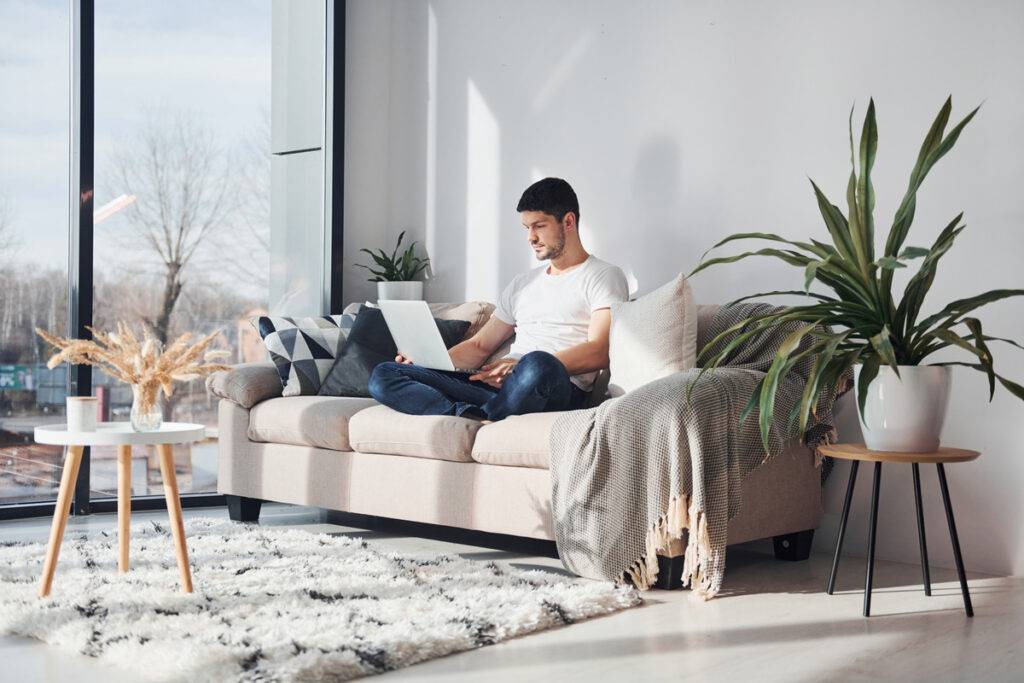When you think of a modern white living room, the first image that often comes to mind is a space that’s sleek, bright, and minimalistic. However, achieving a balance between simplicity and warmth in a white-dominated living room can be more challenging than it seems. As an interior designer, I’ve had my share of experiences creating modern white living rooms that are both stylish and inviting.
In this article, I’ll take you through my thought process and ideas when designing a modern white living room, the issues I faced, and the solutions that helped me overcome them.
Modern White Living Room Ideas
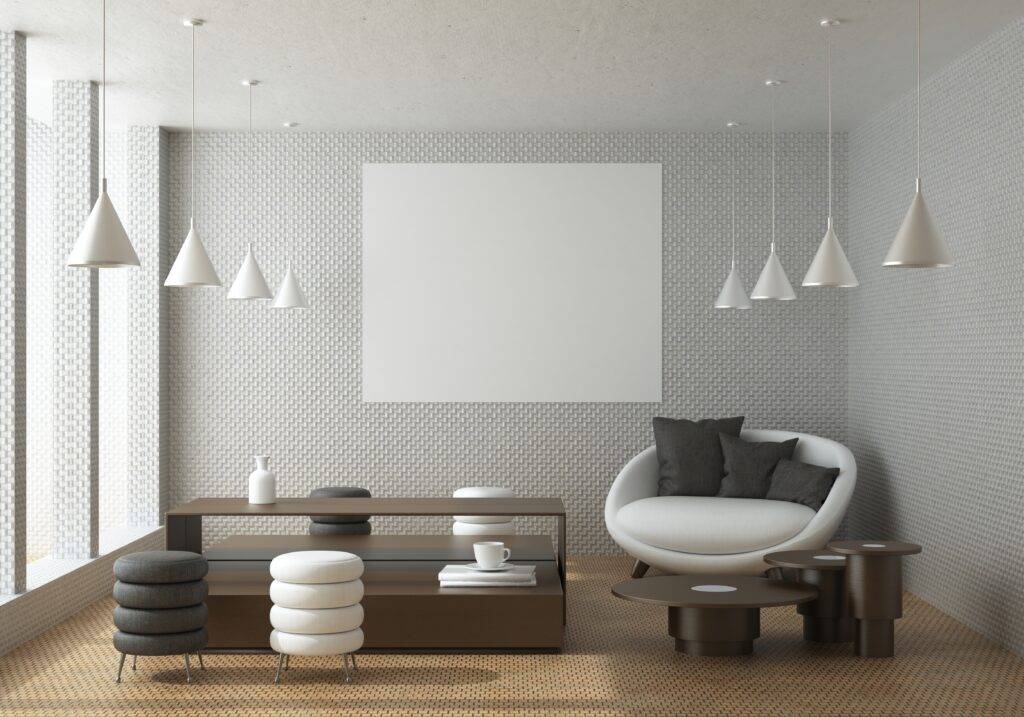
Every successful design project starts with a clear concept. When designing a modern white living room, my goal is to create a space that feels open, airy, and harmonious. This often involves a combination of clean lines, minimal decor, and a neutral color palette. However, it’s crucial to ensure that the space doesn’t end up feeling too sterile or unwelcoming.
In one of my early projects, I worked with a client who wanted a modern white living room with a touch of luxury. They were drawn to the idea of a minimalist space but were concerned about it feeling cold. To address this, I knew I had to focus on adding warmth through texture, lighting, and a few carefully chosen accent pieces.
The Challenges of a White Palette
One of the biggest challenges with a white living room is avoiding monotony. When everything is white, it can be difficult to create visual interest and depth. In the project I mentioned earlier, I faced this exact challenge. The client had chosen white walls, white furniture, and even white curtains, which created a clean but somewhat flat look.
To tackle this issue, I decided to introduce subtle variations in texture and tone. We chose a soft off-white for the walls, which added a bit of warmth without straying from the overall theme. For the furniture, we selected pieces with different textures—like a plush white sofa with a smooth finish and a shaggy white rug. These variations helped break up the monotony and added a tactile element to the room.
Incorporating Warmth with Natural Elements
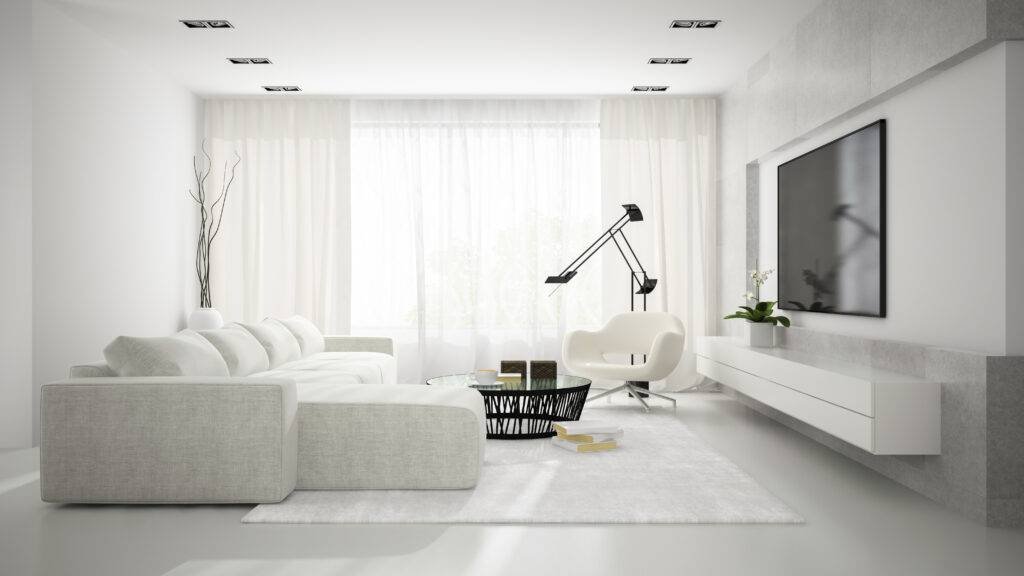
One of my go-to strategies for adding warmth to a white living room is incorporating natural elements. Wood, in particular, can be a great way to bring warmth and contrast into a white space. In this project, I decided to use wooden accents to create a sense of balance and harmony.
We added a wooden coffee table with a rustic finish, which became a focal point in the room. This piece not only added warmth but also served as a conversation starter due to its unique grain patterns and texture. To further enhance the natural theme, I included wooden frames for the artwork on the walls and a wooden console table. These elements brought an organic touch to the modern white living room, making it feel more inviting.
Playing with Light and Shadow
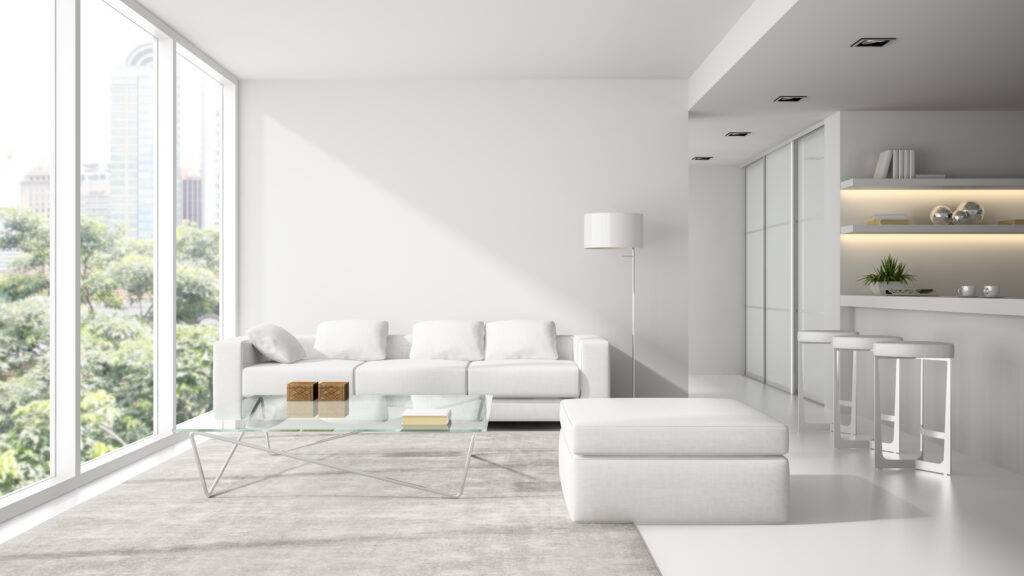
Lighting plays a crucial role in any living room, but it’s especially important in a white space. The right lighting can create depth and dimension, preventing the room from feeling too flat. In my project, the client wanted a bright and well-lit living room, but they also wanted the option to adjust the ambiance for different occasions.
We installed a combination of overhead lighting and floor lamps to provide flexibility. A modern chandelier with adjustable brightness became the central light source, while strategically placed floor lamps added soft, ambient light. This setup allowed the client to create different moods, from bright and vibrant to soft and cozy. The interplay of light and shadow also added depth to the room, enhancing the sense of dimension.
Adding Color Accents
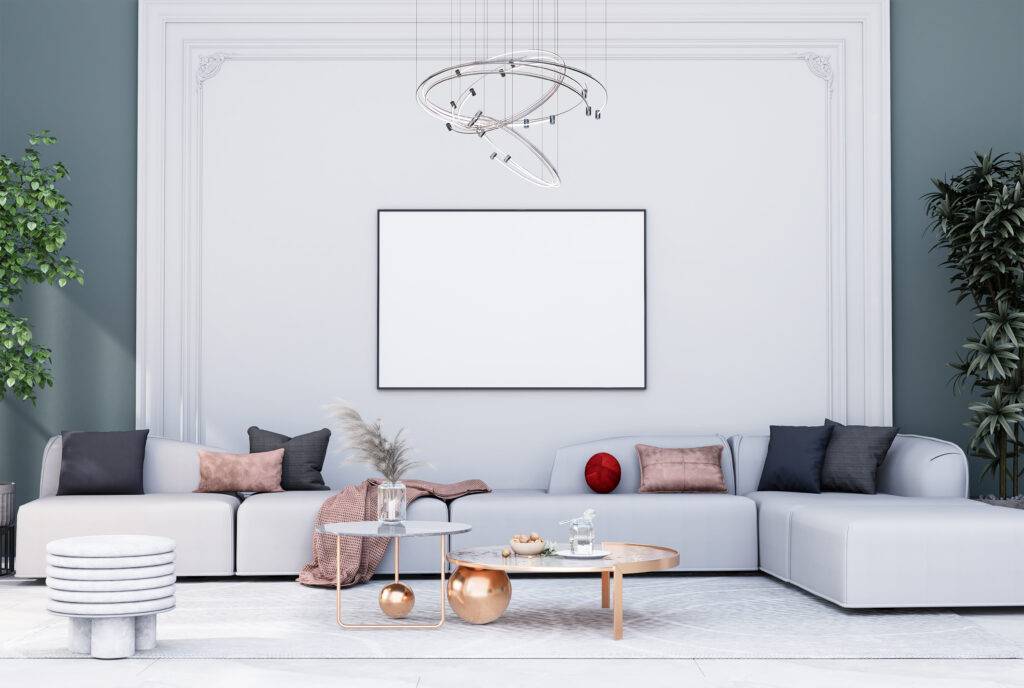
While the primary color in a modern white living room is, of course, white, adding a few pops of color can bring the space to life. In my project, the client was hesitant about introducing color, fearing it would disrupt the minimalist aesthetic. However, I explained that small accents of color could enhance the overall design without compromising the clean lines and simplicity.
We chose a soft pastel blue for the throw pillows, which added a gentle contrast to the white sofa. This subtle color accent helped break up the monochromatic look and added a touch of personality to the room. We also included a few decorative items in complementary colors, such as a blue vase and a light gray throw blanket. These accents provided just enough color to create visual interest without overwhelming the space.
Personalizing with Art and Decor
Personalization is key to making a living room feel like home, and this is true even in a modern white living room. In my project, the client had a collection of black-and-white photographs that they wanted to incorporate into the design. The challenge was finding a way to display them without detracting from the overall modern aesthetic.
We decided to create a gallery wall using black-and-white photographs, arranging them in a clean, geometric pattern. This approach added a personal touch to the room while maintaining the minimalist vibe. To ensure the photographs didn’t blend into the white walls, we used thin black frames, which created a subtle border and enhanced the visual impact. Read more on Den Ideas to increase more hanging out space.
Conclusion
Designing a modern white living room requires careful thought and creativity. While the minimalist approach is appealing, it’s important to avoid creating a space that feels cold or sterile. By incorporating texture, natural elements, lighting, color accents, and personalized decor, you can create a modern white living room that is both stylish and inviting.
In my experience, the key to success lies in finding the right balance between simplicity and warmth. A modern white living room can be a beautiful and functional space where you can relax, entertain, and enjoy time with loved ones. By following these design principles and overcoming the common challenges associated with white decor, you can create a living room that reflects your style and enhances your home’s overall aesthetic.
How do I keep a modern white living room from looking too sterile or cold?
To prevent a modern white living room from feeling sterile, focus on adding warmth through texture, natural elements, and lighting. Use a variety of textures in furniture and decor, such as plush rugs, soft throws, and smooth surfaces. Incorporate natural materials like wood or stone to add warmth and contrast. Proper lighting is crucial—use a combination of overhead and ambient lighting to create depth and prevent the room from feeling flat.
What is the best way to introduce color into a modern white living room without overwhelming it?
The key to introducing color into a modern white living room is to do so subtly and in moderation. Start with small accents like throw pillows, decorative items, or artwork. Choose colors that complement the overall aesthetic without dominating the space. Soft pastels or muted tones work well to add a touch of color without breaking the minimalist feel. You can also consider adding a statement piece, such as a colorful rug or artwork, to create a focal point.
How do I personalize a modern white living room without cluttering it?
Personalization is important, but it’s easy to clutter a space when adding personal touches. To personalize a modern white living room without clutter, focus on a few meaningful items that reflect your style and interests. A gallery wall with family photos or artwork can add a personal touch without overwhelming the room. Use decorative trays or minimalist shelving to display small items in an organized manner. Plants and greenery are also great ways to add life and personality without adding clutter.
